Encountering unexpected signs such as a sweet-smelling puddle beneath your car, an overheated engine, or white smoke could indicate a problem with your vehicle. Are these strange occurrences the result of a coolant leak in your car? This article offers advice on how you can address such issues.
Well, these questions seem to happen to many car owners. But, don’t worry! This article will help you answer the most common questions about coolant leaks.
Stick with us as we clear up everything about coolant leak, from verifying symptoms, causes and how to fix a leakage. It would also be wise for you to learn about the costs and time it takes to repair them.
Let’s get started!
What is a coolant leak?
Engine coolant aids in the temperature regulation of a car’s engine. As temperature changes occur outside, coolant is transported throughout the engine block to keep the temperature inside balanced. It may happen that sometimes the coolant can leak due to varying factors depending on one’s usage. The leak can occur anywhere in the cooling system and is usually very easy to identify since you will see it dripping from the component. It also has a very distinct odor and color that makes it easy to locate coolant leaks in your car.
Mending a coolant leak could be a low-cost, easy task or it could be an expensive, complex chore. So if your car is losing coolant, you need to pinpoint how fast it’s leaking and where it is from.
Symptoms of a coolant leak
Your car is designed to give out signals when it gets a problem. A radiator that leaks coolant can cause hazardous effects such as too much engine noise and weakened performance for your vehicle. When there is an issue of coolant leak, you can look out some symptoms to identify it.
Puddles of coolant
One of the most obvious and easiest ways of checking for a coolant leak is to examine puddles under your car after you’ve parked. After parking for hours, a puddle forming on the ground under your car could be a possible sign of coolant leak. The fluid’s color depends on what formula you use. It may be green, orange, pink, red, or blue. Engine coolant manufacturers use these colors to differentiate other car fluids from coolants.
Overheating engine
Another way of determining the coolant leak is to check if the temperature gauge reads high or the temperature warning light appears. Although changes in the temperature gauge are normal, unusual fluctuations may signify a problem. The reason for this is that insufficient coolant in your vehicle will make it hard for it to push heat out.
Read more: Engine Hot AC Off: What Does It Mean And How To Fix It?
Low coolant level in the expansion tank
Your car is furnished with a reservoir that stocks extra coolant. If the container is empty or holds low amounts of fluid, coolant may be leaking when your car is running. Make sure that checking the expansion tank is part of your car maintenance routine.
Coolant warning light
Your vehicle is equipped with a coolant level warning light. The light appears when the coolant level is too low from the standard amount. If the proper amount of coolant is not supplied, your automobile’s engine could be at risk for considerable damages such as leakage.
Sometimes, the leak may evaporate even before it has a chance to drip. But the minute its fluid decreases, your car will let you know about it. So, this would be a great way to know if there is a leak in your system.
Bubbles in the radiator
Bubbles in the radiator or the coolant expansion tank may be due to combustion gases entering your cooling system, which in turn may be due to coolant leaks. This, however, may also be due to leaks in your vehicles head gasket. Both issues must be urgently addressed as they may endanger both you and your vehicle.
Rust or discoloration of the radiator
Leaking coolant can cause rusting spots and discoloration on the radiator. The fluid spills onto the hot patches of the radiator and boils, resulting in discolored spots with rust stains. The discoloration and rusting of the radiator can help you determine that your cooling system is faulty. When you inspect your car, trace the source of the discoloration to find the leak.
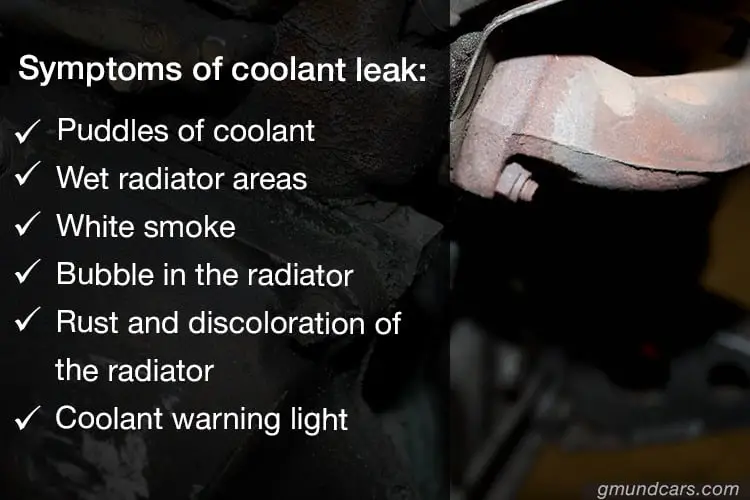
Causes of a coolant leak
A coolant leak can be caused by many different factors. But whatever the cause is, the outcome would always be inconvenience and engine block damage. You could minimize the damages to your engine by checking for coolant problems.
By being aware of the causes of coolant leaks, you are more likely to prevent them from occurring in the future. Moreover, the first step towards fixing a coolant leak is identifying its causes. Below are some common causes of coolant leaks.
Improperly sealed radiator hoses
As they show signs of wear, the hoses attached to the radiator would have difficulty forming a tight seal. The spots where they fasten to the radiator, heater core, and water pump are prone to damage and leaks.
A leaky radiator cap
By creating a tight seal, the radiator cap helps maintain the correct pressure in the cooling system. It automatically releases pressure when there is too much build up in the radiator. This pressure, however, is also one of the reasons why the radiator cap is eroded over time. Its spring and seal may acquire holes, which could allow coolant to drain out.
Damaged expansion tank
The expansion tank both supplies and receives engine coolant. The radiator sends or collects coolant from the tank depending on the engine block’s needs. Because the expansion tank is usually a plastic tank, it is susceptible to weakening with time and exposure to temperature changes. The expansion tank or its lid could fracture and coolant might escape.
Corrosion within the radiator
A car engine undergoes plenty of weathering under severe operating conditions. Corrosion within the radiator is one of the main reasons why coolant spills. As the parts wear out and deteriorate, debris may enter the tubes and start a leak.
Over time, the radiator and hose connection collects rust sediments. This rust leads to holes throughout the radiator, which provides the coolant a way to leak. The radiator’s heat also gives it a higher chance of it wearing down quickly.
Blown head gasket
A head gasket creates a seal between the cylinder heads and the engine block. It can be difficult to notice if your head gasket has blown, so you should check its condition regularly. Severe temperatures can cause the head gasket to bend and deteriorate significantly. The damages cause the gasket to stop separating the coolant and engine oil. When the coolant and engine oil mix, coolant leaks could develop.
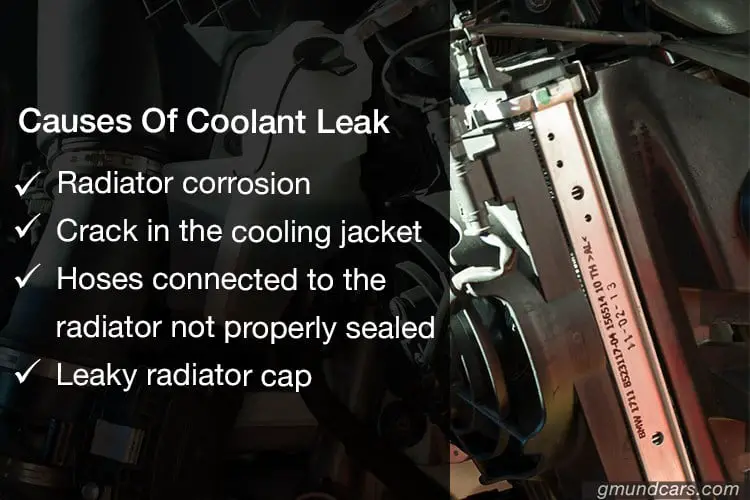
Where may a coolant leak occur?
Before fixing the leak, you need to determine first where it is coming from. Coolant leaks can come from various sources. A leak can be tough to find because, in many instances, it quickly evaporates once it drips to the heated engine.
Finding the source may be challenging but we will guide you through it. Let’s take a look at some of the most common places where the coolant leaks.
Hoses
Hose connections are one of the most prevalent leak points in the engine. The hoses, which are commonly composed of rubber, are subject to erosion even under regular usage. Coolant will seep out of fractured or corroded hose connections. Moreover, because of continuous usage, the seals of the hose can become slacked and not fit well. This will lead to leakage from the clamps.
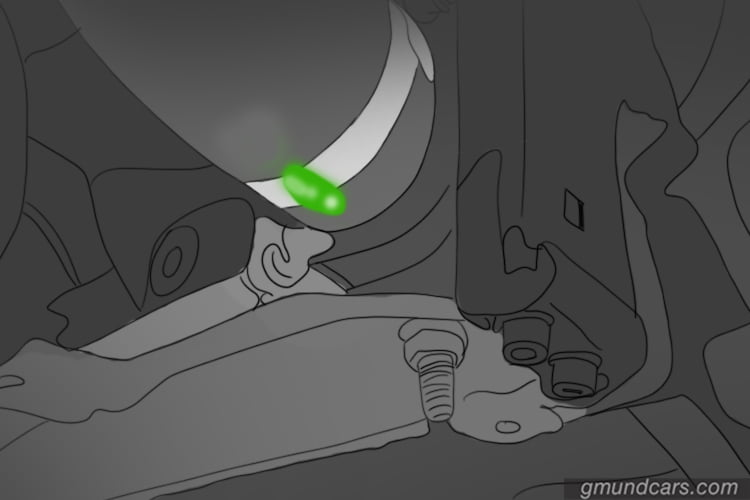
Water pump
The way your coolant works is by circulating between your engine and radiator. By moving between these two parts, heat is transferred from the engine to the radiator, which in turn cools it down. Then, the cycle repeats itself.
This circulation is done by no less than your car’s water pump. Over time, however, your water pump’s shaft seal can get eroded. This erosion may then allow the coolant to escape out from under the water pump pulley shaft.
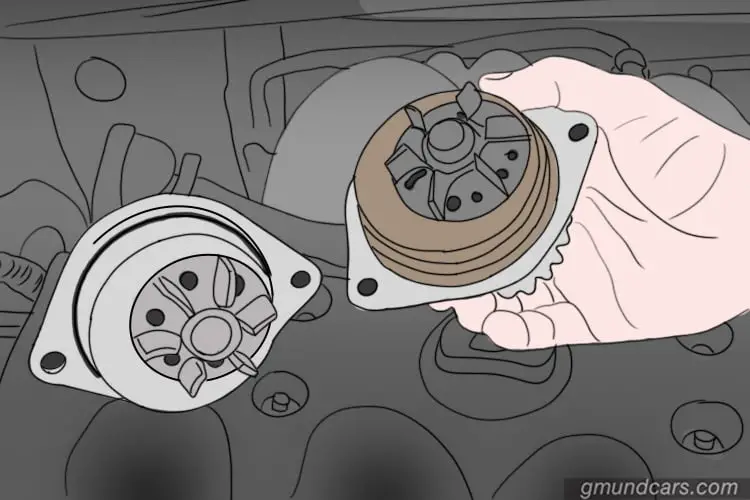
Reservoir
A coolant reservoir is a plastic tank that is attached to the engine and stores the coolant fluid. It helps regulate the flow of hot and cold. Since the hose is part of the system, it is bound to get hard and brittle over time, making the clamps on the reservoir loosen up. This allows the coolant to leak out and damage your cooling system. Also, the reservoir constantly receives exposure to extreme temperatures, the material can weaken. Coolant leaks occur when the plastic deteriorates enough to create cracks.
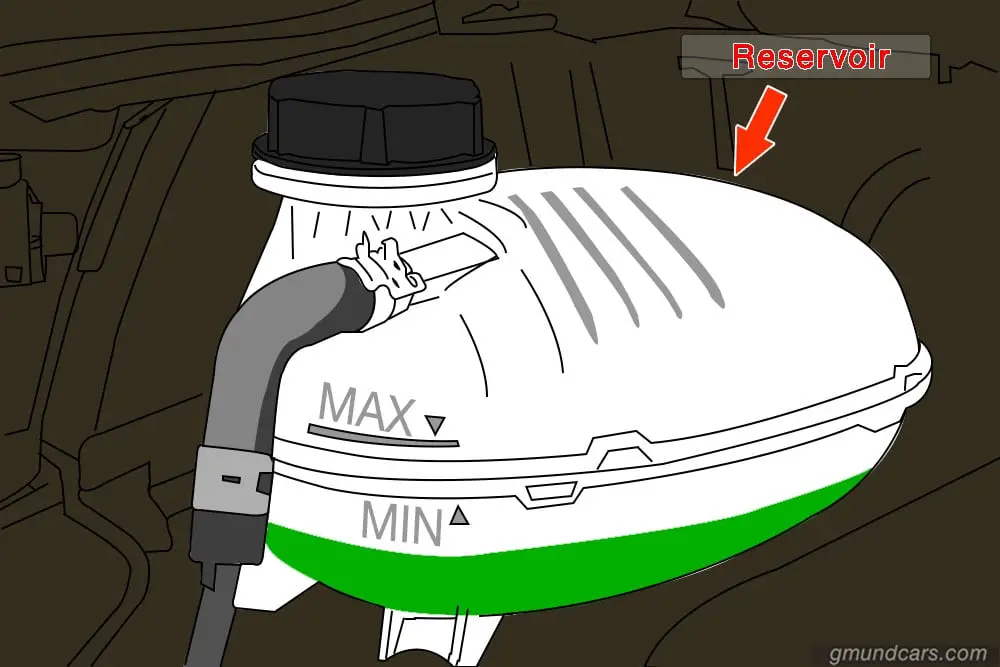
Read more: Coolant Boiling in Reservoir: The Causes and How to Fix It
Radiator
The radiator is the usual source of a coolant leak. The hoses attached to the radiators are often prone to acquiring defects that could result in leaks. The leak can come from any of the joints connected to the radiator, so make sure to be thorough in your inspections. Old coolant that has not been replaced can also be a source of metal and internal decay in radiators.
Beside, the radiator have an aluminum core, the leak may happen over any of the joints attached to the radiator. The vibrations loosen the hose around the radiator and cause leaks. The radiator’s core is also vulnerable to stone damage that weakens the radiator and causes coolant to leak.
Moreover, the radiator is usually very hot and would have gone through a lot of temperature changes. Because the radiator houses the coolant, it is one of the places that coolant can leak from.
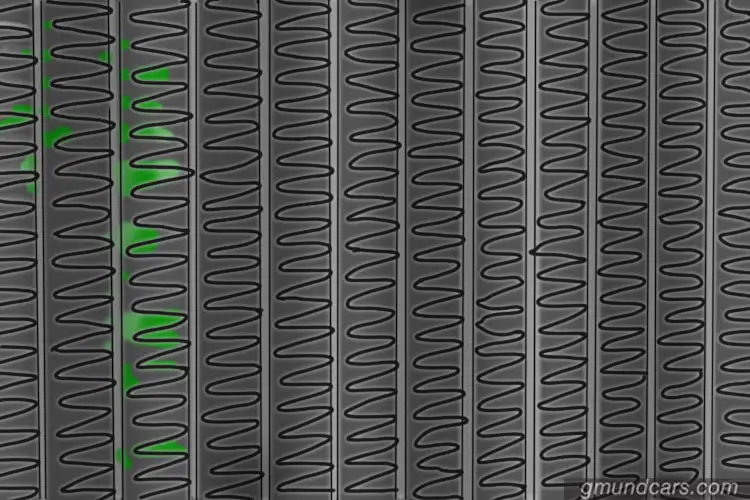
Head gasket
If the head gasket’s seal does not properly hold, coolant might bleed outside the engine. Additionally, blown head gaskets could lead to oil and coolant mixing. The mixture is likely to appear on top of the coolant tank or radiator. You will detect a sweet-smelling exhaust emanating from your car if the coolant leaks to the combustion chamber.
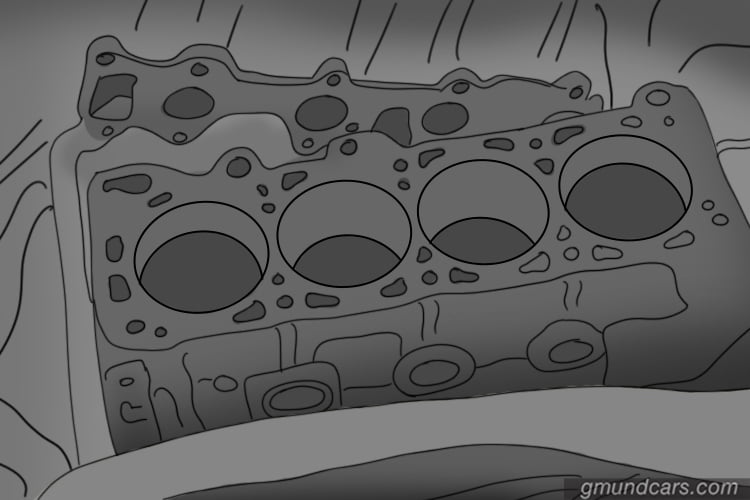
How to find a coolant leak?
External leak
Locate a leak by using a pressure tester
A pressure tester is a tool that detects leakage in the cooling system or the radiator. The pressure tester consists of a hand pump, a pressure gauge, and multiple rubber fittings. Depending on your vehicle’s model, you might need a special adapter to connect the pressure kit to the cooling system.

Astro Pneumatic Tool Universal Radiator Pressure Tester Kit
- First, you need to screw on the adapter to the radiator’s opening and connect the pressure kit.
- Next, refer to the information on your radiator cap and find out the unit of pressure (psi).
- After pumping pressure into the cooling system, refer to the pressure tester’s gauge.
- Finally, see if it matches the psi value on the radiator cap. If there is a leak, the pressure will drop, or you won’t meet the specified psi value.
The standard psi pressure that should exist within your radiator should be around 16 pounds per square inch (psi). Exceeding this value may cause your radiator and its other parts to burst.
Locate a leak without using a pressure tester
If you don’t own a pressure tester kit, here’s how you can check for leakage in the cooling system. To easily see where the leak comes from, park your car on dry ground. Start examining the cooling system when the engine cools down. Scan the area around the engine and see if there are any symptoms of a coolant leak.
- Puddle check
Locating a leak with your eyes is a sure-shot way to know if there is a leakage from your cooling system. When you find puddles underneath your car, stick your hand in the liquid and check the color and smell. If it has a defining color of the coolant you use or a sweet smell, then your car is definitely leaking coolant.
To know exactly where the leak came from, you would need to use your eyes to search beneath the car for wetness or possible stain trace and pinpoint the exact area. You might also use your hand to feel through the parts over the puddle for any trace of wetness.
Note: Wear rubber gloves to protect yourself from the engine fluid.
- Hoses check
To be sure whether there is a leak around the hoses or not, you can check their conditions. Hoses in poor condition could also be a source of leaks. These properties indicate that you should replace them.
- Radiator check
First of all, check the radiator cap if it is worn-out or broken. The leak may occur as a result of it. Then, look at the reservoir tank to see its coolant level. If the coolant is low, leakage could have happened. Another sign of a coolant leak is a sweet smell emanating from the heater. When you open the hood and feel a sweet smell, it might start leaking from the heater core.
Note: Locating an external leak can be easy to do for DIYers or beginners
Sometimes, you may not be able to see the leakage, but that does not mean that there isn’t any. Your car may have an internal coolant leak. Here’s how you can locate an internal leak:
Internal leak
Internal leaks are much more difficult to detect than external ones. In most cases, internal leaks evaporate through the exhaust system after moving through the engine. When coolant leaks to the engine, it will vaporize quickly due to the heat. Your exhaust system will emit an excess of white smoke.
If the exhaust system releases normal amounts of white smoke and no signs of external leaks are present, you might need to conduct a more extensive engine scan. Some of the most common parts that leak coolant from the exhaust system include fractures in the head gasket, engine block, turbos, and valves. Detach the exhaust manifolds and spark plugs when examining potential leaking parts.
Another thing you should note is before removing the radiator cap, allow the radiator to cool down first. Oil and bubbles inside the radiator are usual indications of coolant leaks. Using a pressure tester is advisable to identify an internal leak since it is very likely that the internal leak may go through the engine.
Note: If you are not mechanical savvy or experienced, ask for instruction from your mechanic to spot an internal leak.
How to fix a coolant leak?
When you find out where the coolant leak is coming from, you can now start the repair procedures. Fixing a coolant leak doesn’t have to be a difficult task. You can repair coolant leaks in various ways and solutions. Written below are some of the most efficient ways to mend coolant leaks. Let’s see which leaks can be fixed by yourself and which would need assistance from professional mechanics.
What you can fix yourself
Use the radiator stop leak concentrates

Bar’s Leaks 1186 Liquid Aluminum Stop Leak

K-Seal Multi Permanent Coolant Leak Repair

ATP AT-205 Re-Seal Stops Leaks
You can patch up small leaks using sealants or radiator stop-leak concentrates. The products are designed to plug minor leaks inside the cooling system. You won’t need to visit an auto mechanic shop since radiator stop-leaks are easy to use even without advanced automotive know-how.

Change the bad hoses
Replacing the hose is quite easy. Buy a good hose and hose clamps and replace all the bad ones. Once this is done, this will instantly make sure that the leak is secured.
Replace the radiator cap
As mentioned above, the radiator cap does tremendous work in keeping the coolant in the radiator. When the radiator’s cap is bad, it won’t be able to hold the pressure. This, in turn, leads to a coolant leak. A simple replacement of this radiator cap will solve this problem.
Fix the coolant reservoir leak
When the reservoir starts leaking due to little cracks or puncture, then you can easily fix that. All you need to do is to get a silicone sealer and use it on the affected areas.
What you need an expert help
Change the coolant reservoir
When the cracks in the reservoir are big, you might need to replace the reservoir in its entirety. To be on the safer side, you can also let professional mechanics help you with this.
Repair the head gasket
It is not easy to know if the head gasket is blown. However, one sign of a blown head gasket is white smoke coming from the tailpipe. When you notice this sign, you should park your car and call the help of a professional to help you fix the blown head gasket.
Replace the water pump
If you find out that the source of the coolant leak is the water pump, then you will have to replace it. This might cost you some money because you can’t ‘patch’ a bad water pump. Replacing the water pump is also easy however, you need to be careful. This is because the same bolt that holds the water pump in some vehicles also holds the timing cover. Make sure the seal of the timing cover is intact to prevent a coolant leak from there.
Note: It is advisable to consult your car manual before taking any step. Perform the repairs as instructed and follow the directions carefully to prevent further damages
Test your repair
After fixing the coolant leaks, you should take your car out for a test drive. Focus on the engine’s temperature and take note of extreme temperature fluctuations and overheating. Always check for leaks on the areas you have repaired and if you can, use a pressure tester.
How much does it cost to fix a coolant leak?
The cost of fixing a coolant leak varies depending on the damaged parts and what solutions to apply.
If you only have to perform minor repairs, you would only spend around $100. Minor repairs include quick fixes such as installing hoses, replacing caps, and using sealants.
In contrast, major repair costs range from $500 or more depending on the part that needs to be fixed. Major repairs include issues on the water pump, radiator, head gasket, and engine block.
Recruiting a mechanic to fix the leak could cost you up to $300. The regular cost of a coolant leak repair hits around $700.
Professional advice: You can do fixing a leakage yourself at home with minor repairs to save you amount of cost.
FAQs
1. How long can you drive with a coolant leak?
It is not advisable to drive your vehicle with a coolant leak. However, in some emergencies, depends on the level of coolant stayed in the tank, you can drive up to a hundred miles. You should regularly fill the coolant tank with water and let your car rest every few miles to stabilize the engine’s temperature. This solution is applicable for a minor leak.
For a major leak, it’s best to call your mechanic or breakdown service help if you are on the road. Major leaks can lead to further damages.
2. How long does it take to fix a coolant leak?
It takes time to diagnose where the coolant escapes from and how to remedy the leakage. A minor repair only takes from 30 minutes to an hour, while a major one can take up to four hours or even 1 to 2 days.
3. Is it okay to smell coolant?
It is safe to say that smell coolant won’t do you any harm. Coolant is a mixture of distilled water and antifreeze. The main ingredient of antifreeze is Ethylene Glycol or Propylene Glycol. They are poorly absorbed through the skin. However, do not inhale coolant for a long time, because it is very toxic and dangerous. Inhale antifreeze for a long time can cause a headache.
Outro
We have come to the end of this article on coolant leak. Hope you have learned a lot from this article. We are also confident that you now master at coolant leaks: The symptoms, the sources, and how to fix them. What you can do yourself, what you need assistance from a mechanic.
Finally, you need to ensure that coolant leak problems must be fixed as soon as you notice them. This is to prevent further damage to your car engine. Fix them now! If you want to keep your car in good shape.
Read more: Can You Mix Red And Green Antifreeze?
